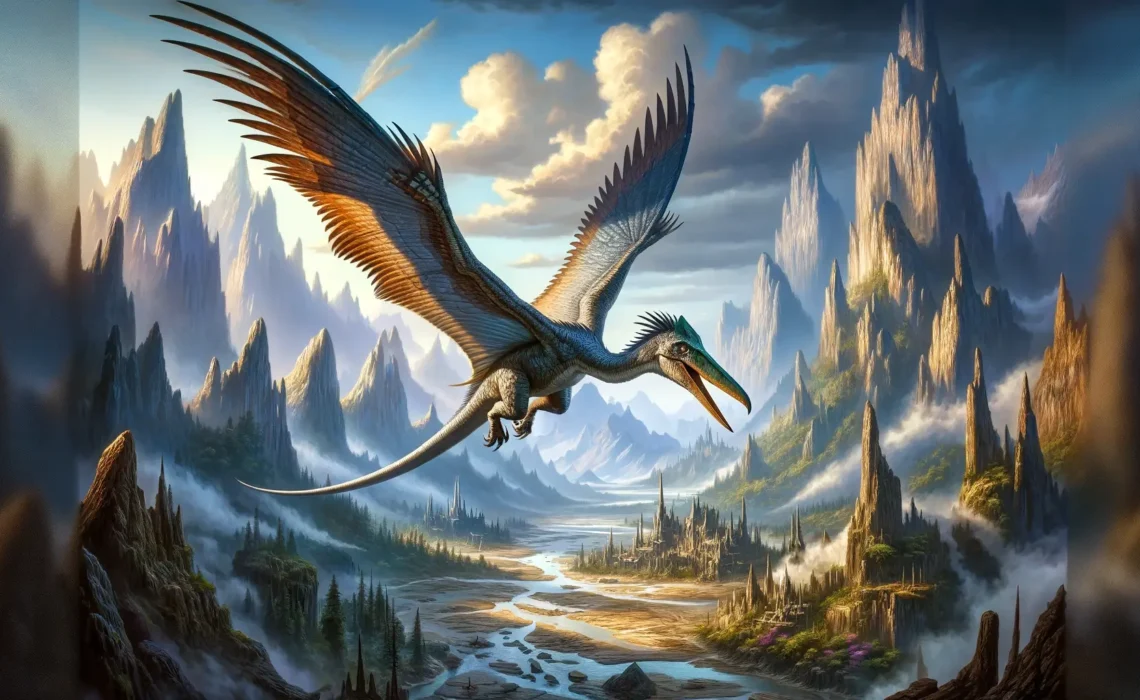In the world of Dungeons & Dragons, there is a massive creature called a Quetzalcoatl. This enormous flying dinosaur has been compared to Pteranodon and other similar creatures in terms of size (as they range from wingspan up to 30 feet). Unlike those small flyers though these others are not an enemy one should be wary around – rather it’s because their D&D stats make them fierce opponents during combat!
When stationary on land or while attacking with its powerful bite this terrifying beast can do significant damage; so if you see one coming at ya’ try running away ASAP before things get ugly!
Quetzalcoatl users were familiar with the mountainous areas and beaches of Cult, where small groups could be spotted flying overhead. In particular, one group was seen in Mist cliffs
A Quetzalcoatl is a type of agamid lizard found throughout Mexico that has been reported from Costa Rica as far north as southern Arizona (hence its nickname “cougar”). They typically live at elevations over 2200 meters, but sightings have been up to 3600 meters! This means these guys push nearly 5000 feet higher than any other land animal on earth; which very impressive for such an easy-going creature who spends most days dozing off under rocks instead of finding ways around tough terrain while also not making himself.
Wild Shape has always been a great way for characters to diversify their options in battle, and Wild shape forms are no exception. The improvement of damage output starts at CR 2 with the introduction of Martial Characters gaining Extra Attack via Fighter’s Weeping Blade ability (which happens automatically).
Flying isn’t available until level 8 when your character will still be on this benchmark score – so if you need them early on, make sure they’re Giant Vultures or Quetzales before 9th level! However, it is worth noting that there may come times when one prefers not having such range limitations when fighting certain enemies who can only be damaged by ranged attacks; then again other classes might have
Table of Contents
Ancient Times
At dawn or dusk, these creatures would take off into clear blue sky where you could see them soar above landmarks such as Uluru/Ayers Rock in Australia we can thank this animal’s ascendancy–alongside other apex predators including docking Coelurosates -for providing.
Their name comes from Quetzalcoatlus 5e – a feathered serpent god in Nahuatl culture that symbolized wisdom; one such creature was thoughtlessly killed when this specific species became extinct long ago (500 million years). The only member found so far had unusually long necks which helped it feed on smaller critters at higher altitudes than most creatures could manage
A D&D adventure awaits you!
Smell and Sight: One of the most exciting parts about playing Dungeons and Dragons is that you get to create your character. Whether you’re a fighter, wizard, or rogue, it’s up to you!
Light Frame: To determine the carrying capacity of the Quetzalcoatlus 5e, you must multiply its Strength score by 2 and add 10.
Iron Stomach: Because of its incredible wing span, the Quetzalcoatlus has an advantage on saving throws against disease. The quetzalcoatlus gains resistance to poison damage and immunity to the poisoned condition.
Weapon Attack Bite Melee: You stab your dagger into the goblin, seriously wounding him. He screams in pain and takes 5 damage. When a grappled creature is caught, it can’t move and its speed becomes 0. The Quetzalcoatlus 5e can grab a target, and then not let go! If the grapple succeeds, it will be unable to bite any other target. It can still use its talons for damage though. It takes a full-round action to throw a creature that weighs 200 pounds or less. If a thrown opponent strikes an object before he lands, he takes 1d
Swallow: Quetzalcoatl’s bite attack is a natural weapon. It can be used to make an extra attack as a bonus action and deals 1d4 bludgeoning damage (1d6 if Large, 1d8 if Huge). The attack hits, the target is swallowed, and then it’s up to you to figure out what happens next! The downside to having such a low Wisdom score is that you cannot benefit from your Constitution bonus when wearing armor or making an AC. You also have a 25% chance for spell failure if casting spells with somatic components, which means it’s hard enough acting as written! It is very difficult to attack or block this creature because it has two defensive abilities.
First, if the Quetzalcoatl’s controller takes their turn at any point during your turn, they can tap it for one mana of any color. Quetzalcoatlus is a creature with three heads. Three large, toothy heads! At the start of each round, it takes 7 (3d4) acid damage. The Quetzalcoatlus 5e can swallow only one creature at a time unless the swallowed creature can produce food.
Understanding the Quetzalcoatlus’s Intelligence and Behavior
The Quetzalcoatlus, despite its imposing size and aerial prowess, possesses a relatively low Intelligence score of 2. This trait suggests that while it may exhibit basic predatory instincts, it lacks sophisticated combat tactics and an understanding of magic.
Consequently, the creature tends to engage in combat primarily for food or self-defense, often targeting what appears to be easy prey without fully assessing the threat level of its opponents. This behavior underscores the importance of devising strategies that exploit its limited intelligence, such as using decoys or camouflage to avoid detection.
Tactics for Parties When Facing a Quetzalcoatlus
When adventurers find themselves against a Quetzalcoatlus, preparation is key. Given the creature’s aerial advantage and preference for swooping attacks, parties should equip themselves with ranged weapons and consider spells that can either ground the creature or attack it from a distance.
Positioning is crucial; staying out of open areas where the Quetzalcoatlus can easily dive into attack can mitigate some of its offensive capabilities. Additionally, understanding that it may attempt to carry away isolated party members can inform protective formations and buddy systems during travel in areas known to host these creatures.
Countertactics Against Quetzalcoatlus: Ranged Combat and Grounding Strategies
Effective countertactics against a Quetzalcoatlus involve ranged attacks and measures to prevent it from taking flight. Spells such as “Earthbind” or “Web” can forcibly ground the creature, making it vulnerable to melee attacks.
For parties lacking magical means, prepared actions that trigger when the creature approaches can also serve as effective deterrents. Additionally, exploiting the environment, such as fighting in densely wooded or enclosed spaces, can limit the Quetzalcoatlus’s mobility and effectiveness in combat.
Role-playing and Narrative Opportunities with the Quetzalcoatlus
The Quetzalcoatlus offers rich narrative and role-playing opportunities beyond combat encounters. It can serve as a guardian of ancient ruins or a sacred site, challenging adventurers to prove their worth or cleverness to pass.
Alternatively, a tamed Quetzalcoatlus could become a majestic mount for a high-ranking NPC or even a player character, symbolizing power and prestige. Its presence in a story can also be a source of awe or fear, depending on whether it is portrayed as a protector of the natural order or a harrowing predator from a bygone era.
Comparing the Quetzalcoatlus with Other D&D Creatures
The Quetzalcoatlus holds a unique place in the diverse ecosystem of D&D creatures. Compared to ground-based behemoths like the Tyrannosaurus Rex, it offers the tactical advantage of flight, although it lacks the brute strength of the T-Rex.
Against magical creatures like dragons and beholders, the Quetzalcoatlus’s lack of magical abilities places it at a disadvantage, though its agility and speed in the air provide different tactical challenges. When matched against giants, its ability to attack from above can make it a formidable opponent, though its relatively lower hit points make it vulnerable to powerful ranged attacks or spells.
Summary of Quetzalcoatlus 5e:
Quetzalcoatlus is a large pterosaur that rules the skies. It’s an 11-15+ foot long flying reptile with giant wings, sharp claws and teeth, a spiny head crest, and a very thin fragile neck. In the world of Monster Hunter, you hunt large creatures called “large monsters”. They can be found in different environments and they have specialized habitats.
Some examples are the Great Jaggy which lives in jungles, and Tigrex which lives in high mountains Pteranodon is a genus of pterosaurs that existed in the late Cretaceous period. They were carnivorous and had a large head with sharp teeth for ripping flesh. Pteranodons would often hunt in packs to take.
These giraffe-sized interiors also possess toothless beaks with sharp points; another feeding behavior these herbivorous dinosaurs have would be stealing kills from smaller predators or scavenging off dead creatures for food at any given time while on the go!
Thank you for checking our blog! Want to see more about 5e characters and other cool stuff? Come see our 5e Blog section of the website. Lots of cool , Updated ideas and fun things are waiting for you!
The Ultimate Guide to Mastering Compelled Duel in Dungeons & Dragons 5e



